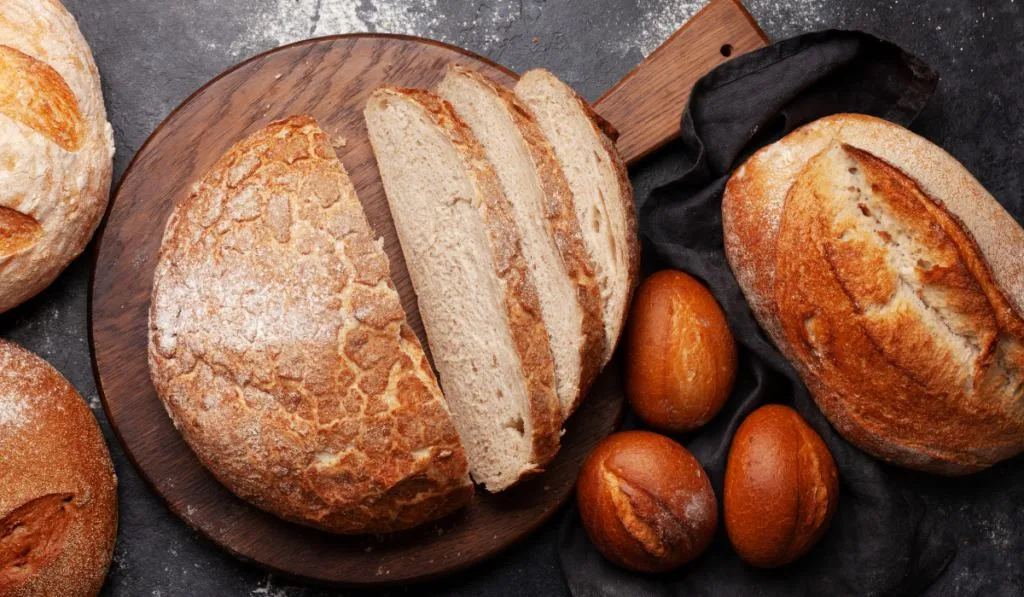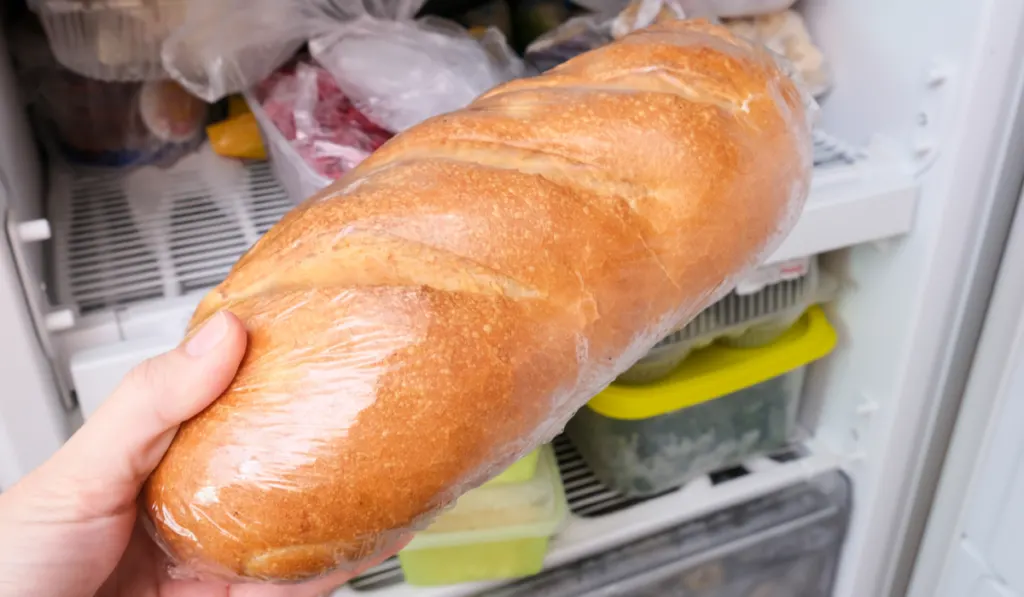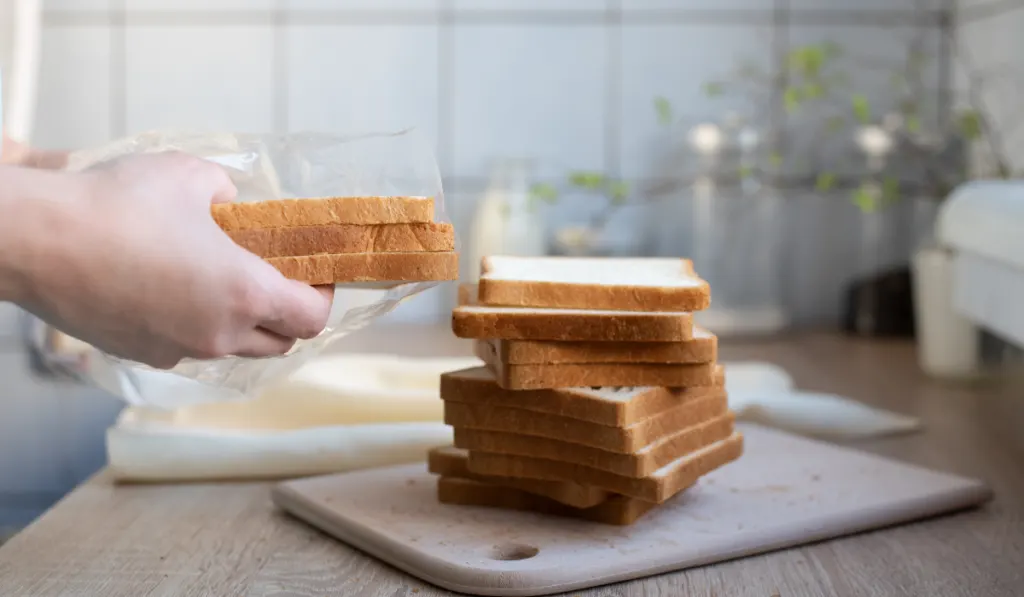It’s happened to all of us. We buy bread, eat only a few slices, and three days later, it lands up in the garbage bin, stale, molded, wasted. Next time we try to freeze the remainder of the bread to make it last longer.
Then, when we are ready to use it, we take it out to thaw and make a sandwich once it has defrosted, only to realize we have only used some of it again. What do we do now? We don’t want to waste any food. Could we possibly place it back into the freezer?
You can refreeze bread, but the quality and the freshness could be slightly affected, depending on the type of bread it is. You can refreeze bread after it has defrosted; make sure it is wrapped in plastic film or placed in an air-tight container before you put it in the freezer.

You need to ensure that it has completely defrosted before you refreeze it. Otherwise, it will be as if you have ice blocks in your bread. Standard bread types such as whole wheat and white bread refreeze well as opposed to sourdough loaves of bread.
If sourdough bread is frozen and defrosted, the crust won’t be crunchy anymore. Instead, it will leave you with a somewhat chewy loaf of bread, which isn’t very pleasant to eat.
Table of Contents
How Do You Freeze And Refreeze Bread?
If you have baked the bread yourself, allow it to cool down before placing it in the freezer. Wrap your bread in clingfilm first, followed by foil, and then it is ready for freezing.
If you want to thaw your bread, you can place it in the refrigerator overnight, and it should be ready to eat in the morning.
Remember that homemade bread does not contain store-bought bread’s preservatives; therefore, it will have a shorter shelf-life.
Do not put your frozen bread in the sun to defrost because the ice will melt too quickly, and your bread will become mushy and soggy.
The bread needs to absorb the moisture systematically. When you want to refreeze the bread, it is best to slice it first and divide them into portions according to your needs.
Portioning your bread makes it convenient to remove only the number of slices you will be using instead of defrosting the entire loaf.
After slicing your bread, use plastic freezer sheets between each of the slices before placing it in the freezer. This makes it easier to separate the slices, as they won’t be frozen to each other.
According to Zackary Golper, the owner of Bien Cuit Bakery in Brooklyn, it is better to freeze a bread whole than in slices. He claims that individually wrapped slices frozen cause the bread to dehydrate more than a whole or a half loaf. (source)
Ensure that you write the date on the bread to monitor how much time you have to use it before it goes bad. If it stays in the freezer longer than the recommended time, it may get freezer burn, and it will be of no use.

Can You Refreeze Bread That Contains Eggs?
The best bread to refreeze is bread containing eggs. Examples of these include:
- Challah Bread – this a Jewish bread that looks like it has been plaited or twisted.
- Brioche Bread – This is a French bread that is also referred to as a pastry.
- Easter Egg Bread – This is a Russian bread shaped by braiding three long dough pieces into one loaf.
Eggs help to retain most of the moisture after it has been defrosted. Even if you refreeze it after it has thawed, the eggs help to keep the original, fresh flavor of the bread.
What Happens When You Refreeze Bread?
After you have placed your bread in a sealed bag or air-tight container and place it in the freezer, the moisture in the bread slowly condenses.
The condensed moisture freezes in the container or bag. When you remove the package and leave it to thaw, the same moisture gets reabsorbed back into the bread.
It is important to remember that the moisture forms crystals as it freezes and will change the bread’s structure.
Portioning your bread before you freeze it is better because the bread structure won’t be as compromised. You could freeze slices, but it defrosts into a dryer state than a larger portion would.

Can You Refreeze Gluten-Free Bread?
Gluten-free bread is airier and doughier than bread containing gluten.
Gluten is the ingredient that ultimately holds the bread together and raises the structure. If a loaf of bread is lighter, it will not dry out as much as bread that is less airy.
How Many Times Can You Refreeze A Bread?
Bread needs to be refrozen about 48 hours after it has defrosted completely. You can refreeze bread as many times as you want, but bear in mind that the quality and flavor will worsen after each time that you refreeze it.
Before you refreeze your bread, you need to consider the following;
- The bread needs to be free of mold
- It would be best if you made a note of when you froze it the first time to avoid ending up with stale bread. So, when you freeze your bread the first time, make sure you write the date on the container or freezer bag.
- Make sure that the bread is room temperature before refreezing it. If you refreeze your bread and there are still ice crystals from the last time, then your bread will end up with larger water crystals, compromising the bread structure even further, and your bread will be very soggy when you defrost it the second time.

Does A High-Quality Bread Refreeze Better Than A Low-Quality Bread?
A high-quality bread refreezes better than a lower-quality loaf due to the difference in the fermentation process’s length. If the process is slower, the quality of the bread is higher.
Lower quality bread, such as regular white bread, is made from dough whipped in a power mixer. This is done to save time, as it is usually bread produced for daily bread in shops and grocery stores.
While the high-speed mixer whips the dough, it increases the oxidization in the bread. If your dough is over oxidized, it will be pale in color instead of having that lovely yellow hue. Oxidation whitens or bleaches the pigment of the wheat.
High-quality bread is often sold frozen because it recovers to its original state when it is defrosted. In contrast, a bread of lower quality loses some of its freshness and won’t have the same quality of color or taste of a high-quality bread.
Helpful Tips
If unfortunately, you do end up with stale bread after refreezing it a couple of times, you do not have to throw it away. Here are a few ideas you can do to use your stale bread.
- Make croutons by cutting the stale bread into small blocks, drizzling over a bit of olive oil and placing it in the oven until it is golden and crispy.
- Blend your stale slices of bread in a food processor until they are in crumb form. Place these breadcrumbs onto a baking tray, and bake them until they are crunchy and dry.
- Coat your slices of bread in eggs, panfry them and top them with bacon and syrup and there you have delicious French toast.
In Conclusion
Nobody likes to waste food, but it is also not always possible to finish a whole loaf of bread before it passes its use-by date.
Now we know that there is a way to save it. If you prepare the bread properly before freezing it, you should have no problems.
The next time you purchase a loaf of bread, use what you need and make sure to freeze the remainder of the bread right away or before 48 hours have passed if you know that you will not be using it anytime soon. This will help lock in the freshness from the start so that you will almost taste no difference in the bread when defrosted.
Now you can enjoy your bread anytime you want, without wasting a single crumb!
